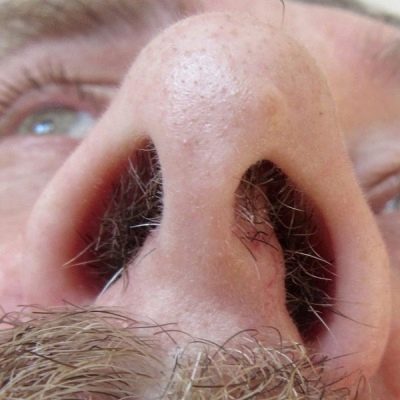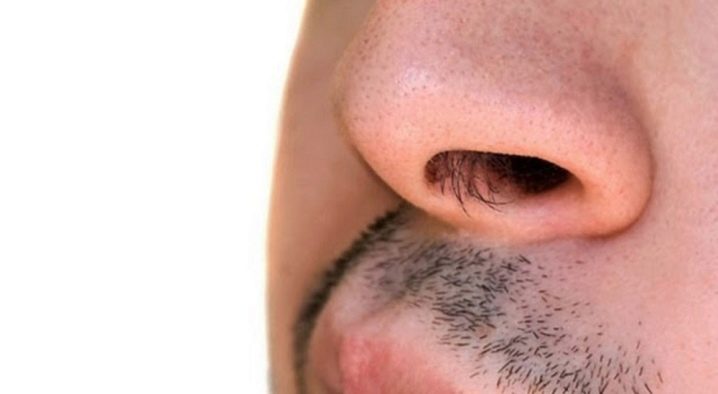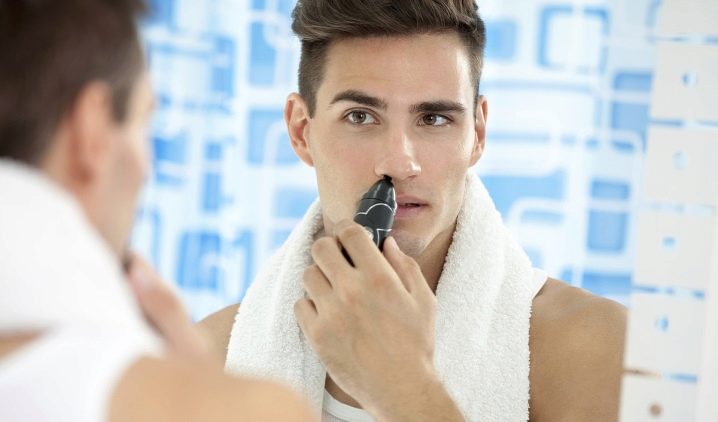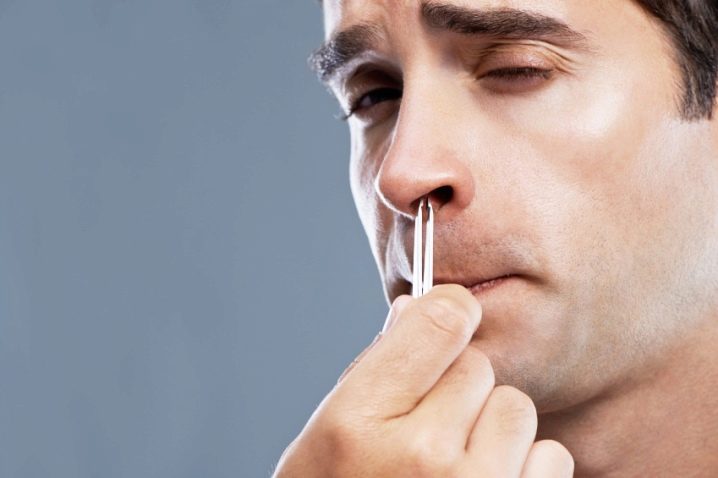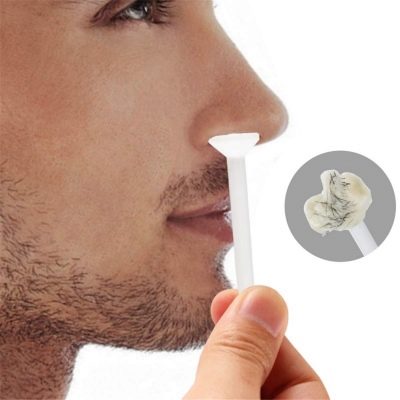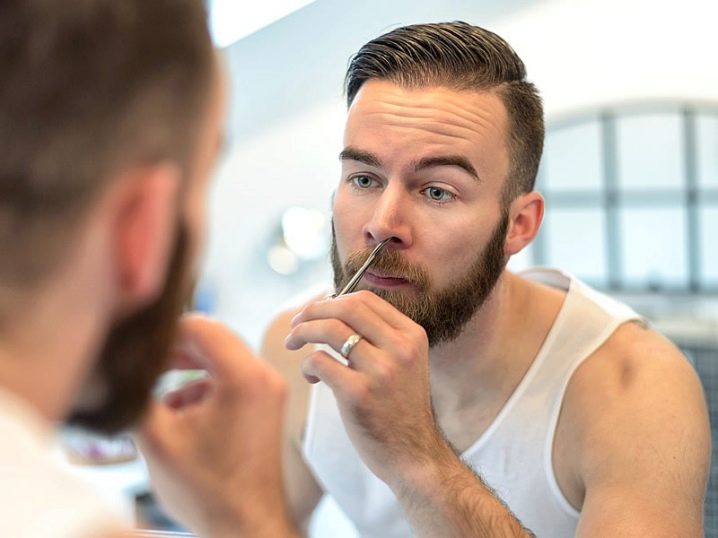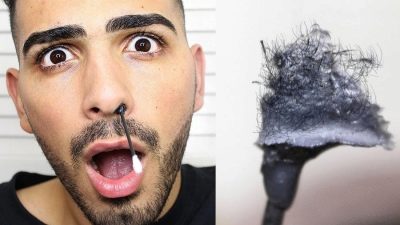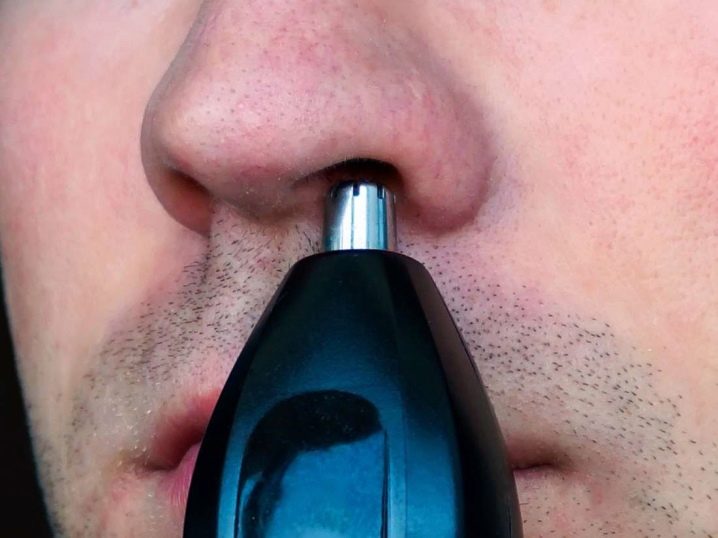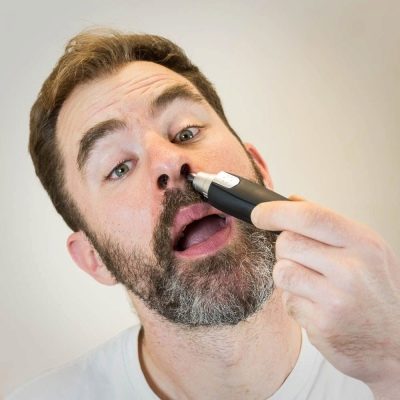How to remove hair from the nose?
In the process of evolution, humans have no longer needed to protect the skin with hair. Thus, the hairs on the legs and arms have become rudiments, which young ladies and some men are trying to get rid of in every possible way. As for the hair in the nose, everything is not so simple - we need them. However, nobody likes the "thickets" sticking out of their nostrils. Whether it is possible to delete them, and if so, in what way - we will find out below.
Peculiarities
If you've ever plucked hairs from your nose, you've probably noticed their obvious resemblance ... to eyelashes. In fact, the function of both is obvious - it is to protect the nose (eyes) from dust particles, viruses and other unnecessary foreign objects getting there.
Let's take a closer look at this issue and get acquainted with the features of the nasal hairs.
- They block the path of various particles of fine dispersion, which is why they do not enter the respiratory tract. This is a very important function - if it weren't for it, these elements could harm the vulnerable mucous membranes.
- Pathogenic microorganisms, bacteria and viruses also "cling" to the nasal hairs and do not "pass" further.
- Another useful function is to reduce the effect of toxins and allergens on the human body. In some cases, it even helps prevent poisoning.
And medical research has shown that those people who do not remove their nose hair are 3 times less likely to develop asthma.
- At the "entrance" to the nostril, long and thick hairs grow, behind them there are shorter and thicker ones. They are called cilia. Their main task is to retain fine particles and molecules of various substances. There is a special mucus on the cilia, which is rejected when sneezing and blowing your nose. Together with it, the nasal passages are cleared of foreign elements.
- In winter, the hairs in the nostrils increase the friction of cold air as it is inhaled. The air becomes warm, the mucous membranes do not freeze. In addition, the cilia retain moisture, preventing hypothermia of the nasal passages.
Let's summarize all of the above. Of course, the desire of a person to remove the hated "thickets" from the nose is understandable, however, as we found out, they bring benefits to people. Their removal increases the load on smaller cilia, and decreases protection against pathogenic microorganisms.
In addition, the mucous membrane of the nostril is very delicate, the hair cannot be thoughtlessly tugging, since there is a high risk of injury, the appearance of ingrown hairs, and infection (especially when using a non-sterile device).
If you have weighed all the pros and cons and want to get rid of excess vegetation in the nostrils, read on and follow the recommendations mentioned.
Home hair removal methods
If you don't want to waste time going to the beauty salon for such "little things" as nose hair, you can remove it yourself at home.
Plucking with tweezers
The most commonly used method. Pull out hairs with eyebrow tweezers. This is quite painful, your eyes may start to water, or you sneeze a couple of times. Rough plucking can damage the mucous membrane so much that it begins to bleed. Therefore, act softly, do not get carried away.
Before the procedure, disinfect the working tool by wiping it with alcohol or chlorhexidine solution. Ordinary vodka will do.
It is also advisable to disinfect the nasal cavity with chlorhexidine (water-based) or miramistin.
So let's get started:
- move your nostril slightly with your finger to better see the hairs;
- grab one hair with tweezers and pull it out with a sharp movement;
- do not try to grab a bundle of hair at once - there is a great risk of injuring the mucous membrane, and the pain will be much stronger.
Do not go deep into the nasal passage, do not pluck out the cilia that do not stick out of the nose. Be aware of their barrier function and do not deprive your body of protection.
Do not perform the procedure just before going outside - let the wounds heal, the swelling subsides, and the redness decreases.
At the end of the manipulation, again treat the nostrils from the inside with chlorhexidine / miramistin.
Removal by wax
You can fight vegetation in the nose with wax. To do this, you will need to purchase an encapsulated product and a wax melter.
The procedure is performed every 2-3 weeks, it is not recommended to do it more often.
Algorithm for nose waxing:
- melt a little wax in a wax melt and let it cool slightly so as not to burn the mucous membrane;
- then apply warm wax on a regular cotton swab;
- gently insert this now wax stick into the nostril, lean it against the wall and hold it for about 60–80 seconds;
- pull the stick out of the nose with a sharp movement - the hairs adhering to the wax will remain on it.
You can insert a wax stick into the nostril and press the wing of the nose with your finger - then you will remove the hair from both sides of the nostril in one time.
This procedure is also very unpleasant, but bearable. It requires compliance with safety rules.
- Do not use hot wax - it should be warm but not scalding. Make sure it is at the right temperature beforehand by applying it to your wrist.
- You should not insert the stick too deep into the nostril, your task is to remove only those hairs that stick out.
- Be sure to disinfect the nasal passages after depilation with the aforementioned medications.
Depilation cream
To be honest, this is a rather controversial method, since depilatory creams sometimes cause irritation even when applied to the legs - what can we say about delicate mucous membranes! Therefore, before deciding to remove hairs with such a tool, check out the possible risks.
- Any depilatory cream contains aggressive chemical components - they destroy the keratin compounds in the hair, practically dissolving it. Of course, they also have a negative effect on the mucous membrane.
- Nobody canceled the possibility of individual intolerance, allergic reactions.
- Most of these types of products smell very unpleasant.
- If suddenly you apply too much of the composition to the mucous membrane or it penetrates deep into the nasal passage, if the shelf life of the cream has come to an end, if you decide to take the initiative and do not read the instructions for use - well, you are the first candidate for a chemical burn of the mucous membrane.
But the cream has been selected, the recommendations have been followed, the obligatory allergy test has been passed (for this, the agent must be applied to the wrist and held for at least 5 minutes) - let's start depilation:
- Apply the cream in a very thin layer to the necessary places;
- wait 5-7 minutes;
- rinse your nostrils thoroughly with warm water;
- lubricate the treated area with a cream for healing wounds or a pharmacy agent (for example, the Rescuer balm is suitable).
Breathe through your mouth during the procedure.
A haircut
Perhaps the most "light" and safest way.
To trim the hairs in your nose, you need small nail scissors with curved tips. Of course, they will have to be disinfected beforehand.
Take care of good lighting so you can see what you are removing and keep the risk of cuts to a minimum.
So, move the wing of the nose slightly to the side with your finger. Bring the scissors to your nostril, cut off any protruding hairs. All is ready!
You can repeat the manipulation in a week, when the hair grows back.
Shugaring
If someone does not know, shugaring is the removal of excess vegetation on the body with the help of a special sugar paste. The procedure is similar to wax depilation.
The cotton swabs will come in handy again.
Step-by-step instruction:
- prepare the paste according to the instructions (heat it up);
- apply it on a stick, insert it into the nostril, let the mixture cool and harden;
- pull the stick out of your nose with a sharp movement;
- treat the inner surface of the nostrils with an antiseptic.
If you choose a sugar paste that contains honey, make sure you are not allergic to it.
Hardware removal
Let's start, perhaps, with a home appliance for removing unnecessary vegetation not only in the nose, but also in the ears, and even in the bikini area - this is a trimmer.
Here's how to use it:
- choose a suitable attachment;
- turn on the device;
- gently insert it into the nostril;
- shave off the hairs with smooth rotational movements;
- do the same for the second nostril.
Of course, the trimmer, like all other devices, is pre-disinfected with alcohol, and the nasal mucosa is washed with soap or wiped with an antibacterial solution. After the procedure, the nostrils are treated with hydrogen peroxide from the inside and a soothing cream is applied. Well, the trimmer attachment will need to be cleaned of hairs with a special brush.
Well, we finally got to the salon treatments. With their help, you can almost painlessly permanently get rid of the hated vegetation in the nose.
- Laser epilation. Some cosmetology centers have a hair removal service near the nose. However, there is a caveat: the hair must certainly be dark. This is due to the fact that the laser acts on the melanin in the hair shafts and follicles, due to which the latter are destroyed. This is a rather expensive procedure, but in one visit you can remove up to 80% of your hair and forget about it for several years.
To get rid of them forever, you will have to spend at least 5 sessions.
- QOOL epilation Is a type of laser designed specifically for the nasal mucosa. With its help, it turns out to act on each follicle pointwise. The procedure is quite lengthy (takes up to 2 hours) and is often carried out in several stages.
- Electrolysis. The destruction of the hair follicle occurs by exposure to a galvanic current.
Useful Tips
Finally, we will give some recommendations for further care of the nasal mucosa after any of the hair removal procedures.
- In any case (perhaps only a haircut can be excluded), microscopic injuries and wounds will appear inside the nostrils. They need to be decontaminated to prevent inflammation and suppuration. The most suitable pharmaceutical preparations for this: miramistin, chlorhexidine, furacilin, hydrogen peroxide.
- The nasal cavities can be washed with decoctions of medicinal plants (celandine, marigold, chamomile) or Kalanchoe juice, aloe. Of course, you should first make sure that there is no allergy to the above components.


